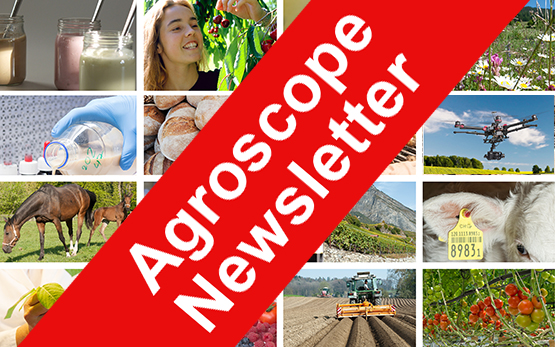Climate protection thanks to agroforestry
Zurich-Reckenholz, 10.09.2019 - Producing food and feed while protecting the climate - is that possible? Yes, and agroforestry is one option, combining agriculture and wood production on the same land. Establishing agroforestry on around 9% of Europe's agricultural land could mitigate up to 43% of European agricultural greenhouse gas emissions. This conclusion was reached by Agroscope experts working with international partners.
Climate change poses a variety of challenges on farmers. They are being asked to reduce greenhouse gas emissions while at the same time increasing production.
This balancing act calls for adaptation and innovation – for example, by means of modern agroforestry systems. As part of the EU AGFORWARD project (www.agforward.eu), Agroscope experts searched the whole of Europe for sites with environmental pressures that would benefit from agroforestry systems. Agroforestry holds vast potential for climate and environmental protection. Trees store carbon, reduce soil erosion and nitrate losses, and provide habitats for many species. The latter benefit is especially vital for pollinators and beneficial insects.
Intensive arable regions in Europe would benefit
The EU study with Agroscope participation concludes that a quarter of Europe's agricultural land is virtually free of environmental pressures. On around 9% of this land, however, the pressures studied are enormous. This concerns the following regions:
- intensive croplands in north-western France, north and south-western Italy, central Spain, Denmark, Greece and eastern Romania,
- grassland in Denmark and Great Britain.
Agroforestry systems on this 9% of agricultural land could mitigate up to 43% of agricultural greenhouse gas emissions in Europe. Food and feed production could be continued.
Agroforestry has a long tradition in Switzerland
Traditional fruit orchards, chestnut selva and wooded pastures are well-known and a common sight in Switzerland. Agroforestry systems are now making a comeback in both arable and livestock farming. There are various types of modern systems:
- Crop rotation with wild fruit trees for timber production
- Vegetable growing with table and cider fruit production
- Free-range hen systems with walnut trees
Farmers can benefit from this in several ways:
- a wider range of products for the market
- more pollinators and beneficial insects
- less erosion and nitrate losses
- active contribution to climate protection
- payments for environmental services linked to the promotion of biodiversity or climate protection
Switzerland too has environmental pressures in agriculture that could be mitigated by modern agroforestry systems. Details of pressures, regional distribution and tailored solutions can be found at https://www.agroscope.admin.ch/agroscope/en/home/topics/environment-resources/biodiversity-landscape/landscape/agroforestry.html.
To introduce modern agroforestry systems in practice, the Swiss Agroforestry Interest Group (www.agroforst.ch / www.agroforestrie.ch) led by Agridea encourages networking between agroforestry pioneers, consultancy and research.
Address for enquiries
Sonja Kay and Felix Herzog
Agroscope, Reckenholzstrasse 191, 8046 Zürich
Media Office Agroscope
media@agroscope.admin.ch
+41 58 466 88 62
Documents
Links
- Publication
- Agroscope Agroforestry
- Agroforestry Article in Agrarforschung Schweiz
- EU AGFORWARD Project
- Interessengemeinschaft Agroforst Schweiz
- Hochstamm-Feldobstbau - vergers haute tige - alberi da frutto ad alto fusto nei campi - traditional fruit orchards (Google Link)
- Kastanien-Selven - châtaigneraies - le selve castanili - chestnut selva (Google Link)
- Wytweiden - pâturages boisés - i pascoli alberati - wooded pastures (Google Link)
Publisher
AGROSCOPE
http://www.agroscope.admin.ch






